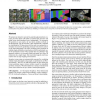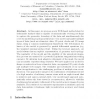992 search results - page 71 / 199 » Anamorphic 3D geometry |
ICCV
2005
IEEE
2005
IEEE
Mutual Information-Based 3D Surface Matching with Applications to Face Recognition and Brain Mapping
14 years 4 months ago
Face recognition and many medical imaging applications require the computation of dense correspondence vector fields that match one surface with another. In brain imaging, surfac...
SMA
2005
ACM
14 years 4 months ago
2005
ACM
In contrast to machined mechanical parts, the 3D shapes encountered in biomedical or styling applications contain many tubular parts, protrusions, engravings, embossings, folds, a...
TOG
2008
13 years 10 months ago
2008
We present an interactive system for generating photorealistic, textured, piecewise-planar 3D models of architectural structures and urban scenes from unordered sets of photograph...
ECCV
2004
Springer
15 years 19 days ago
2004
Springer
In this paper, we propose a new PDE-based methodology for deformable surfaces that is capable of automatically evolving its shape to capture the geometric boundary of the data and ...
CSB
2003
IEEE
14 years 4 months ago
2003
IEEE
Recognition of a protein’s fold provides valuable information about its function. While many sequence-based homology prediction methods exist, an important challenge remains: tw...


